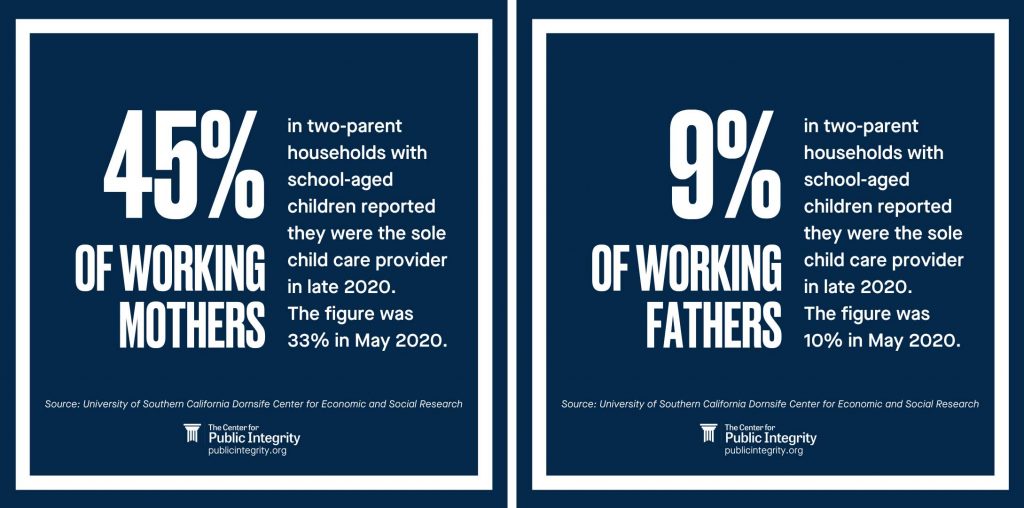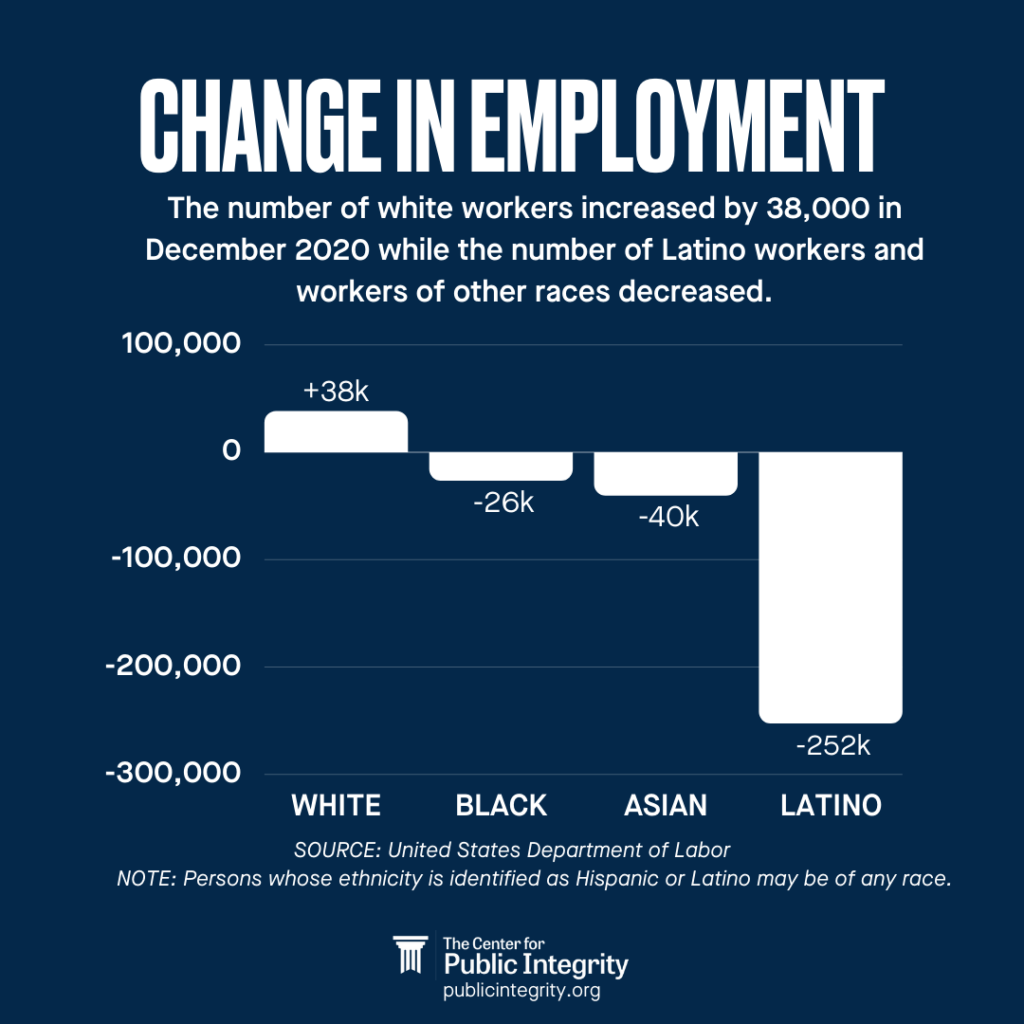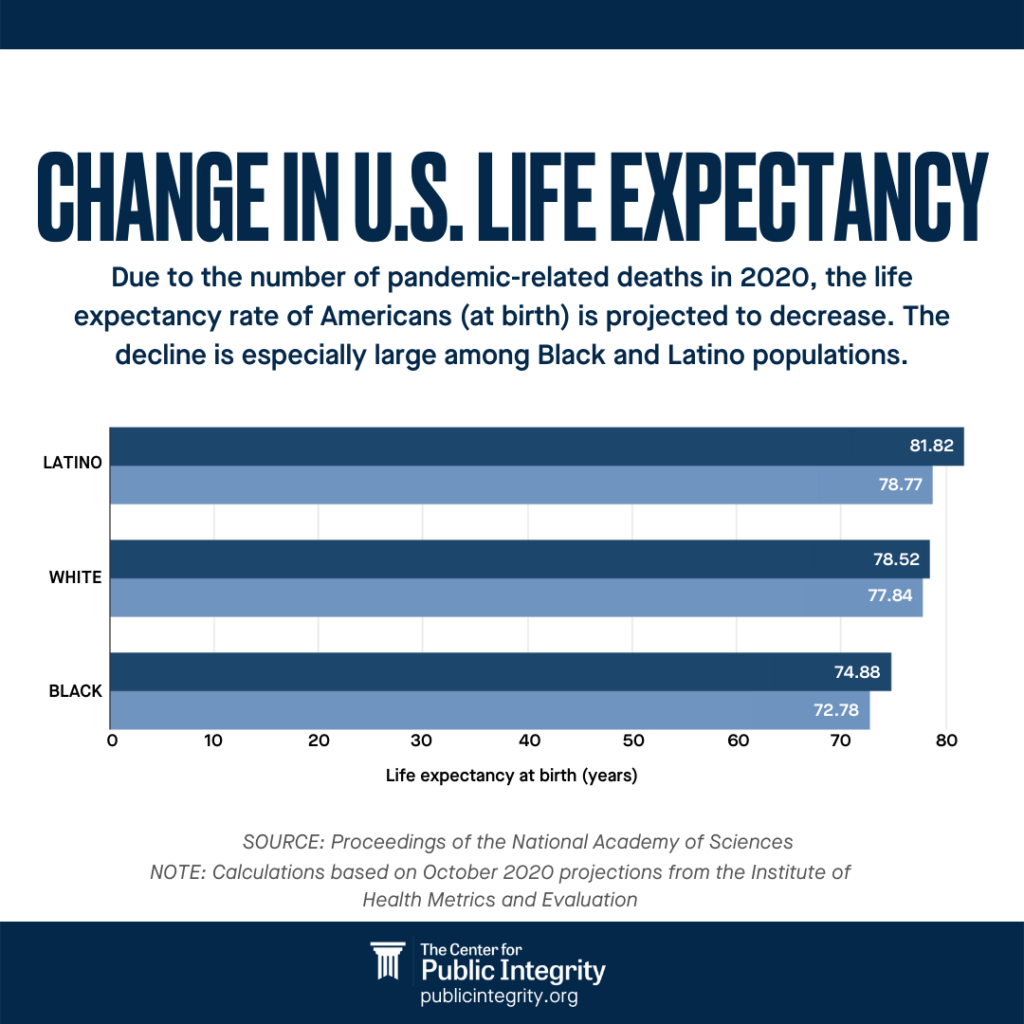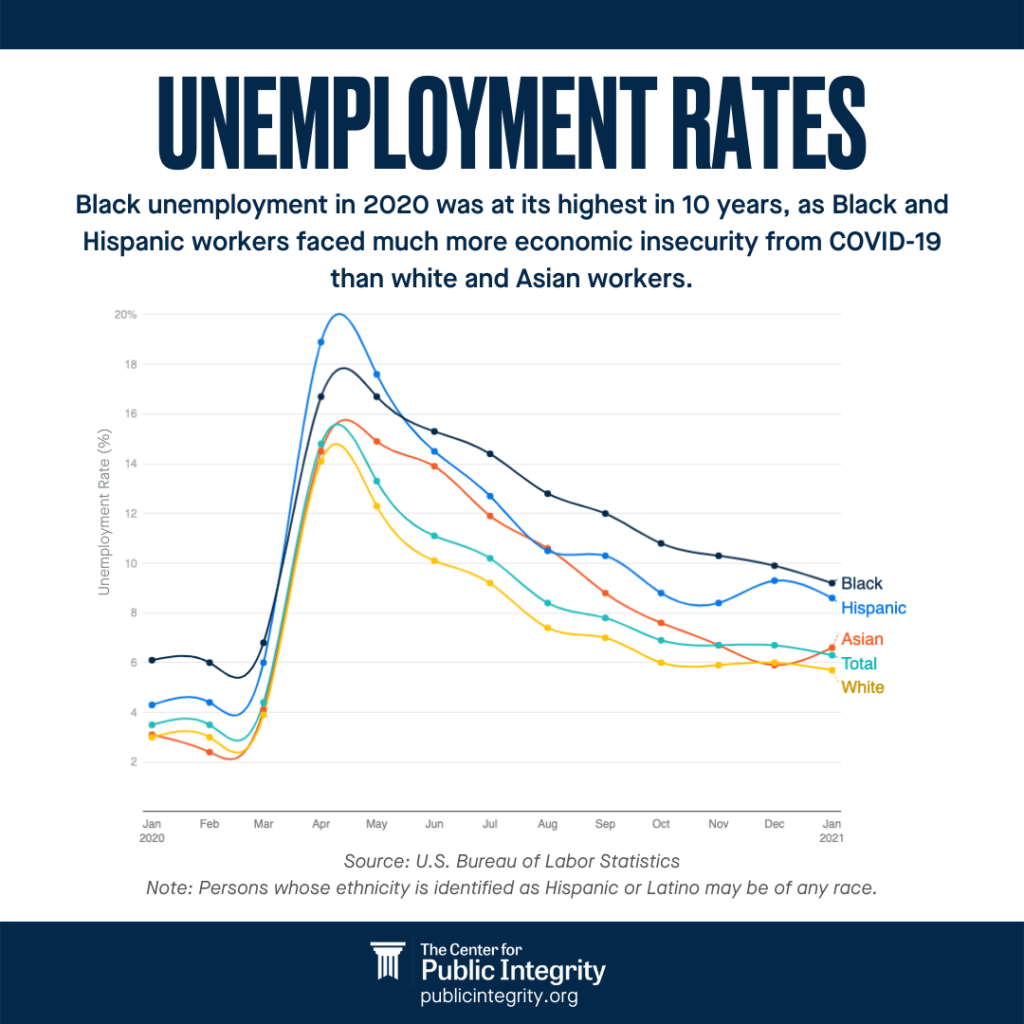Introduction
Sometimes a single statistic can help us understand staggering disparities in American life — in housing, education, health care, wealth, work and more. Our journalism is focused on this inequality, and these data points can be a starting point both for our investigations and for broader conversations about what this means for our communities, how we got to this point, and where we go from here.
Want to help amplify the impact of our work? These snapshots are shareable on social media.
Is there more to the story? Send tips, insights and personal stories to tips@publicintegrity.org.

BroadbandNow estimates that 42 million Americans don’t have access to wired or fixed wireless broadband. But people need broadband to work, to participate in learning and health care and to stay connected. Americans in rural areas and on tribal lands particularly lack access. And in urban areas, White families use a much higher percentage of home broadband internet than Black or Latino families.
Share on Twitter
Share on Instagram

The pandemic shut down child care centers across the country, but it’s no coincidence that it also sent unemployment rates soaring among women — especially those with young children. And while the unusual events of the last year broadly expanded the number of women facing child care crises, this problem — fueled by racial inequity and the gender wage gap — predated COVID-19.
Share on Twitter
Share on Instagram
COVID put America’s multigenerational homes at higher risk
Our analysis of every county in the U.S. shows that 18% of U.S. households are multigenerational. The percentage among people of color is much higher: 30% among Latinos, 25% among Asians and 24% among Black families, compared to 15% for non-Latino white households.
But in most states such households aren’t being prioritized for the COVID-19 vaccine. And experts are urging jurisdictions to target these homes as a way to reach communities of color.
Share on Twitter
Share on Instagram

According to the Urban Institute, the Biden Administration’s American Rescue Plan Act would reduce the projected poverty rate for 2021 by more than one-third. The projected poverty rate for Black people would fall from 18.1 percent to 10.5 percent, while it would drop from 21.9 percent to 13.3 percent for Hispanic people.
Share on Twitter
Share on Instagram

Thirty-eight thousand white people gained employment in December, but Black, Asian and Latino workers continued to lose their jobs. That’s mainly because a larger share of people of color work in the service industry, which has shed the most positions during the pandemic.
Share on Twitter
Share on Instagram

COVID-19 has led to a reduction in U.S. life expectancy in 2020. And the decline is greater among Black and Latino populations. The average reduction is 1.13 years and the decrease for Black and Latino populations is 3 to 4 times that for white people. That means the virus could reverse over 10 years of progress made in closing the life expectancy gap between Black and white populations. A decrease in life expectancy may continue beyond 2020 as more coronavirus deaths occur and as a result of other long-term impacts of the pandemic. Read more inequality data about the COVID-19 risks in New York here.
Share on Twitter
Share on Instagram

White Americans own almost 90% of corporate equities and mutual funds. And these investments jumped $2 trillion in value during 2020’s third quarter. The share of wealth held by Black Americans has decreased since 2017 and increased a bit toward the end of 2020, though it hasn’t fully recovered.
Share on Twitter
Share on Instagram

This week, we took a peek into unemployment rates. Over 80% of Black workers have positions that don’t allow remote work, according to 2017-2018 data from the U.S. Bureau of Labor Statistics. And by the end of 2020, Black people had the highest unemployment rates reported for any race and gender.
Share on Twitter
Share on Instagram
Read more in Inequality, Opportunity and Poverty
Inequality, Opportunity and Poverty
The secret bias hidden in mortgage-approval algorithms
Even accounting for factors lenders said would explain disparities, people of color are denied mortgages at significantly higher rates than white people.


Join the conversation
Show Comments